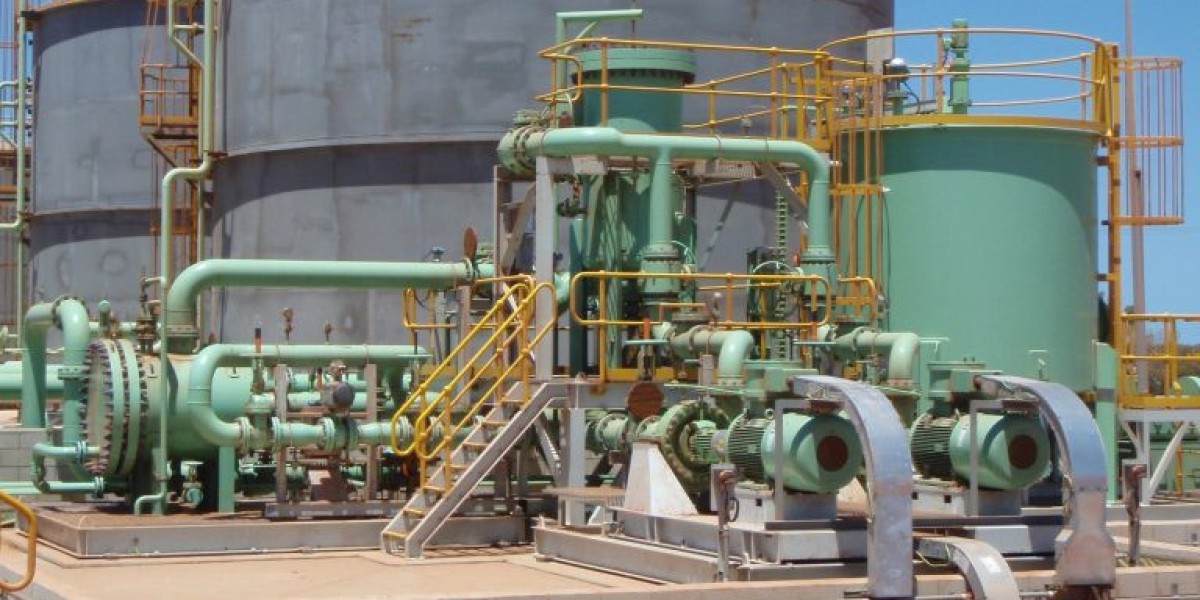The sheer volume of water brought to the surface during oil and gas exploration and production, known as produced water, presents one of the energy industry's most significant environmental and operational challenges. Far from being simple wastewater, this complex mixture—containing hydrocarbons, salts, heavy metals, and dissolved solids—requires intensive treatment before safe disposal or, increasingly, reuse.
The necessity of managing this water is transforming a compliance requirement into a massive economic opportunity. The global Produced Water Treatment Market, valued at a robust US$ 136.0 Billion in 2024, is projected to surge to an estimated US$ 216.5 Billion by the end of 2035, expanding at a steady Compound Annual Growth Rate (CAGR) of 4.4% from 2025 to 2035. This growth signals a fundamental shift in how the energy sector views its water footprint, moving from a disposal-first mindset to a paradigm of resource management and circularity.
Key Drivers Fueling Market Expansion
The impressive forecast for the produced water treatment market is driven by a powerful confluence of environmental, operational, and technological factors:
⚠️ Stringent Regulatory Pressure: Governments and regulatory bodies worldwide are continually tightening the rules on water discharge quality. Stricter limits on total dissolved solids (TDS), oil and grease, and trace contaminants compel operators to invest in advanced, high-efficiency treatment solutions to ensure compliance and avoid massive fines.
? Global Water Scarcity: As freshwater sources become increasingly stressed, particularly in arid oil and gas-producing regions like the Permian Basin in the US or the Middle East, the incentive for water reuse skyrockets. Treating produced water for use in hydraulic fracturing, well injection, or even agriculture directly reduces the strain on local municipal and agricultural water supplies, becoming a critical part of operational sustainability.
⬆️ Rise in Unconventional Exploration: The growth in techniques like hydraulic fracturing (fracking) for shale gas and tight oil has led to a dramatic increase in the volume of produced water and flowback water, which are often more challenging to treat due to complex compositions. This necessitates more sophisticated and specialized treatment technologies.
? Cost Reduction and Enhanced Oil Recovery (EOR): While treatment involves an initial investment, the long-term cost benefits are compelling. Reusing treated water for injection saves significant costs associated with transporting and disposing of produced water in deep disposal wells. Furthermore, treated produced water can be integral to EOR operations, maximizing the value of existing assets.
The Technological Evolution: From Simple Separation to High-Purity Reuse
The market's growth is inextricably linked to technological advancements. The traditional treatment methods—Primary Treatment (for bulk separation of oil and solids) and Secondary Treatment (for finer contaminant removal)—are being complemented and, in some cases, supplanted by cutting-edge Tertiary Treatment processes:
| Treatment Stage | Key Technologies | Focus |
| Primary | API Separators, Skimmers, Hydrocyclones, Flotation Units | Removing free oil and large suspended solids. |
| Secondary | Clarifiers, Filtration (Multi-Media), Coagulation/Flocculation | Removing dispersed oil and finer suspended solids. |
| Tertiary | Membrane Filtration (RO, NF, UF), Advanced Oxidation Processes (AOPs), Thermal Evaporation/Crystallization | Removing dissolved salts (desalination), dissolved organics, heavy metals, and radionuclides to achieve high-purity water for reuse. |
Membrane-based systems, such as Reverse Osmosis (RO) and Nanofiltration (NF), are the major growth drivers in the tertiary segment, as they can reliably handle the high salinity and complex chemistry required for deep reuse applications. Moreover, emerging technologies like electrocoagulation and the use of nanobubbles are gaining traction for their ability to break down tough emulsions with lower chemical consumption, promising greater efficiency and a smaller operational footprint.
Segmentation and Strategic Opportunities
Market segmentation reveals where the major growth opportunities lie:
Application Focus: Onshore vs. Offshore
While Onshore operations currently dominate the market volume due to high volumes from shale plays, the Offshore segment is anticipated to witness faster growth. Offshore facilities require compact, high-performance, and robust systems capable of meeting stringent discharge regulations in marine environments, driving demand for specialized modular solutions.
Treatment Type: Tertiary Takes the Lead
The Tertiary Treatment segment is projected to grow fastest, driven by the push for high-quality water reuse. Operators are moving beyond simple disposal, recognizing that the ability to recycle water internally is a critical competitive advantage and a license to operate in water-stressed areas.
Geographic Hotspots
North America remains the largest market due to mature oil and gas infrastructure and the high volume of water produced from its shale reserves, coupled with strict state-level regulations, particularly in regions like the Permian Basin.
However, the Asia-Pacific region is emerging as the fastest-growing market, propelled by increasing energy demand, expanding industrialization, and a growing focus on sustainable practices in countries like China and India.
The Future is Circular
The journey to a US$ 216.5 Billion market is not just a story of growth; it is a narrative of industrial transformation. By 2035, the industry will have cemented the understanding that produced water is not merely waste, but a valuable resource.
The successful companies of tomorrow will be those that integrate treatment and reuse into their core business model, leveraging digital solutions like IoT and AI for real-time monitoring and predictive maintenance. This shift toward a circular economy model for water will not only ensure compliance and operational resilience but also serve as a powerful testament to the energy sector's commitment to environmental stewardship. For investors and solution providers, the green gold rush in produced water treatment is just beginning.








